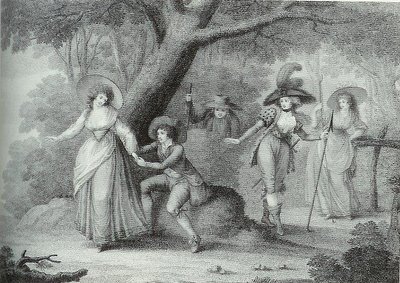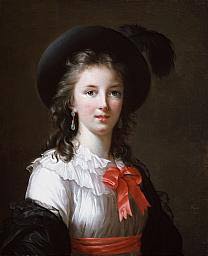 My only real hobby — besides reading books, buying books, going to libraries, buying more books, wishing I had time to read them, trying to find room to store all my books (all of which is not a hobby, after all, but an obsession, or, if I stretch things a bit, a part of my career and therefore all of it quite necessary) — sorry, where was I? Oh yes . . .
My only real hobby — besides reading books, buying books, going to libraries, buying more books, wishing I had time to read them, trying to find room to store all my books (all of which is not a hobby, after all, but an obsession, or, if I stretch things a bit, a part of my career and therefore all of it quite necessary) — sorry, where was I? Oh yes . . .
As I was saying (or trying to say, before my book habit got in the way, as it always does) — as I was saying, my only real hobby is acting. I particularly love Shakespeare. At the moment, my husband and I are in a production of Shakespeare’s comedy As You Like It at Caltech. I’m playing Celia, the Duke’s daughter who runs away to the Forest of Arden, and Todd plays Oliver, a villain who reforms and (coincidentally) falls in love with Celia.
Now that I have my lines memorized (and there are a lot of them — Celia is quite a nice role) — I can read John Philip Kemble’s version of the play and tell immediately which lines he cut, and which words he changed. Quite fun!
Kemble was in charge of the Theatre Royal Covent Garden before and during the Regency, and he was one of its top actors too. He was most respected as an actor when playing tragic roles, particularly noble Romans, but he also appeared in comedies. When he was young, he sometimes played Orlando — and when he got a bit older, he often played the melancholy Jaques (who has the famous speech “All the world’s a stage . . .”)
Mrs. Jordan, nowadays better known as the long-time mistress of the Duke of Clarence (one of King George III’s sons, who later became King William IV) and the mother of many of his children, was the most popular comedic actress of the time. She frequently played Rosalind, but by the Regency proper was too old — and too large — to play a young lady who disguised herself as a boy.
 Then again, if you look at the engraving here by Bunbury, you will see that even when she was young, the lovely Mrs. Jordan did not possess what we would call a “boyish figure.” Indeed, one can tell from the way the artist drew her that seeing her curvaceous figure in men’s revealing clothing was something that the men found quite pleasing…and so few of the men would have likely complained that the delicious Rosalind would never have passed for a boy with that shape…
Then again, if you look at the engraving here by Bunbury, you will see that even when she was young, the lovely Mrs. Jordan did not possess what we would call a “boyish figure.” Indeed, one can tell from the way the artist drew her that seeing her curvaceous figure in men’s revealing clothing was something that the men found quite pleasing…and so few of the men would have likely complained that the delicious Rosalind would never have passed for a boy with that shape…
Next week, I’ll talk about Kemble’s version of the play — and which lines were too naughty (and which weren’t) for Regency audiences . . .
Cara
Cara King, www.caraking.com
MY LADY GAMESTER — out now from Signet Regency!!!







